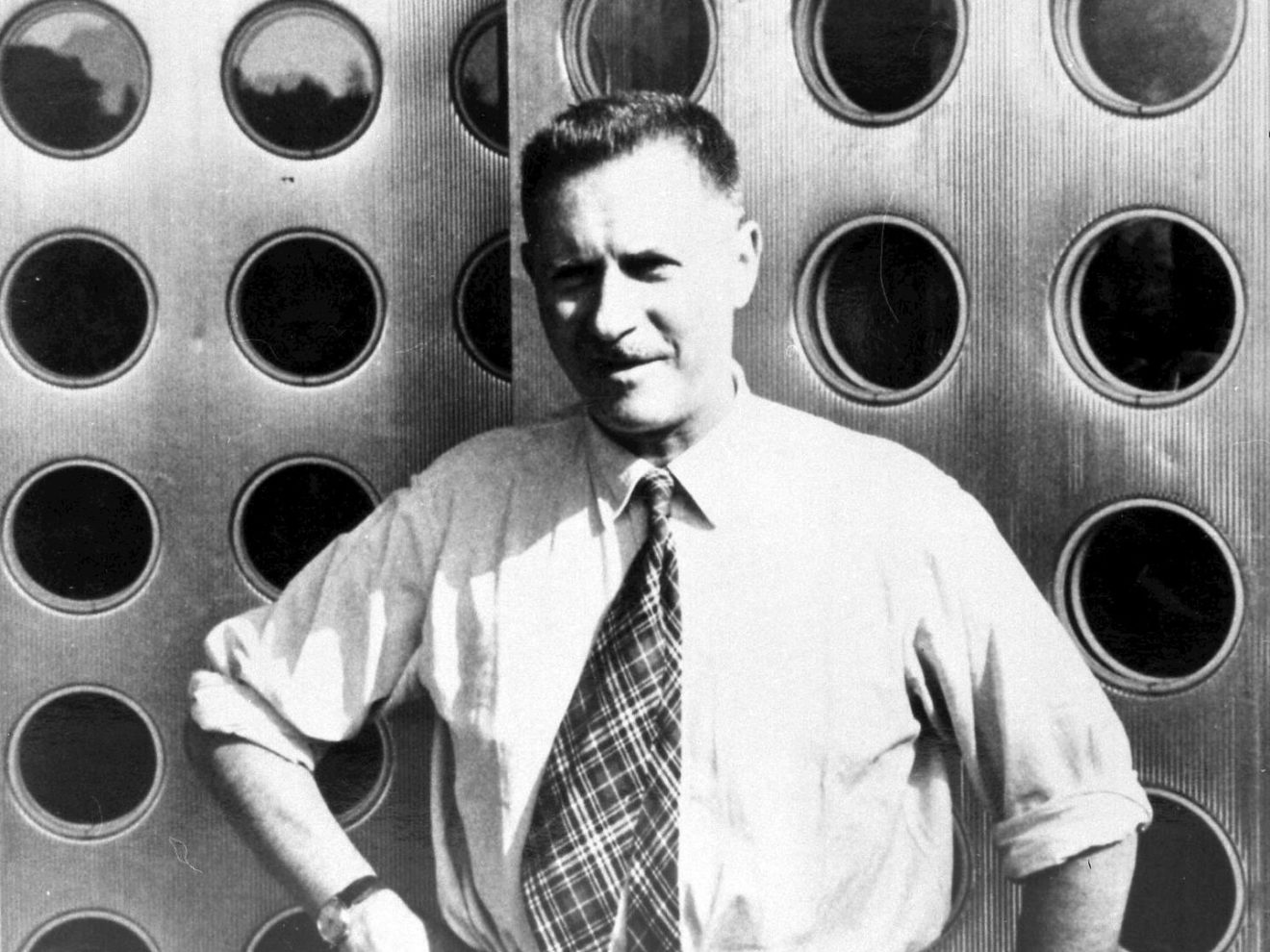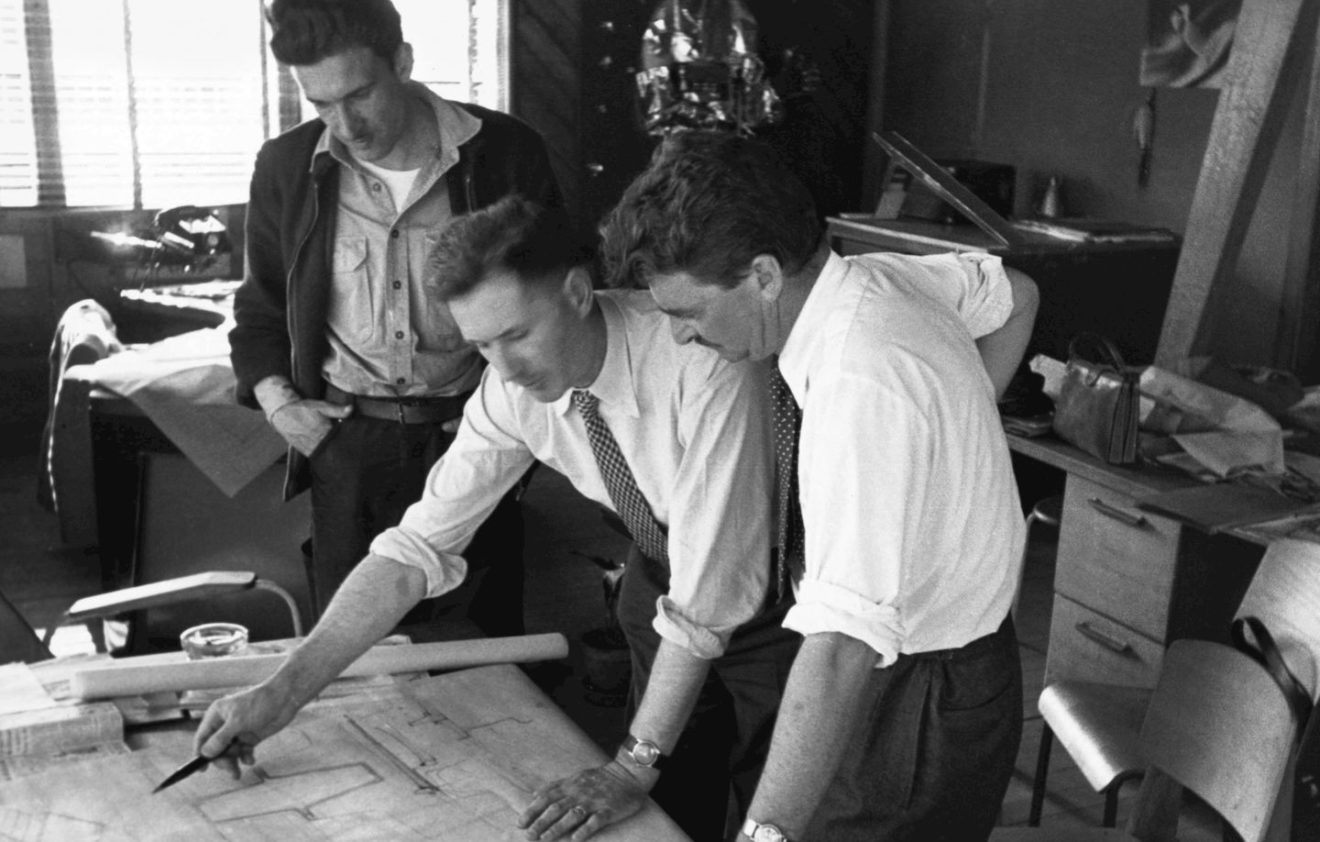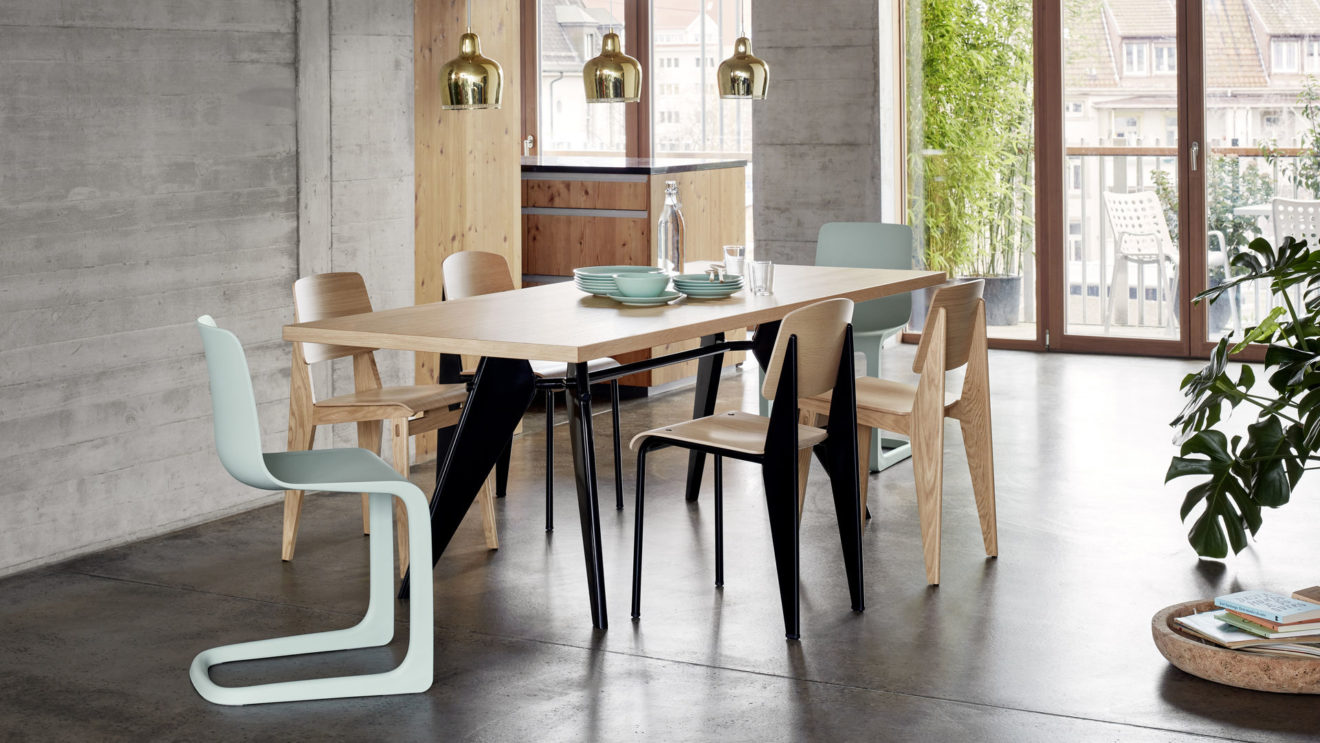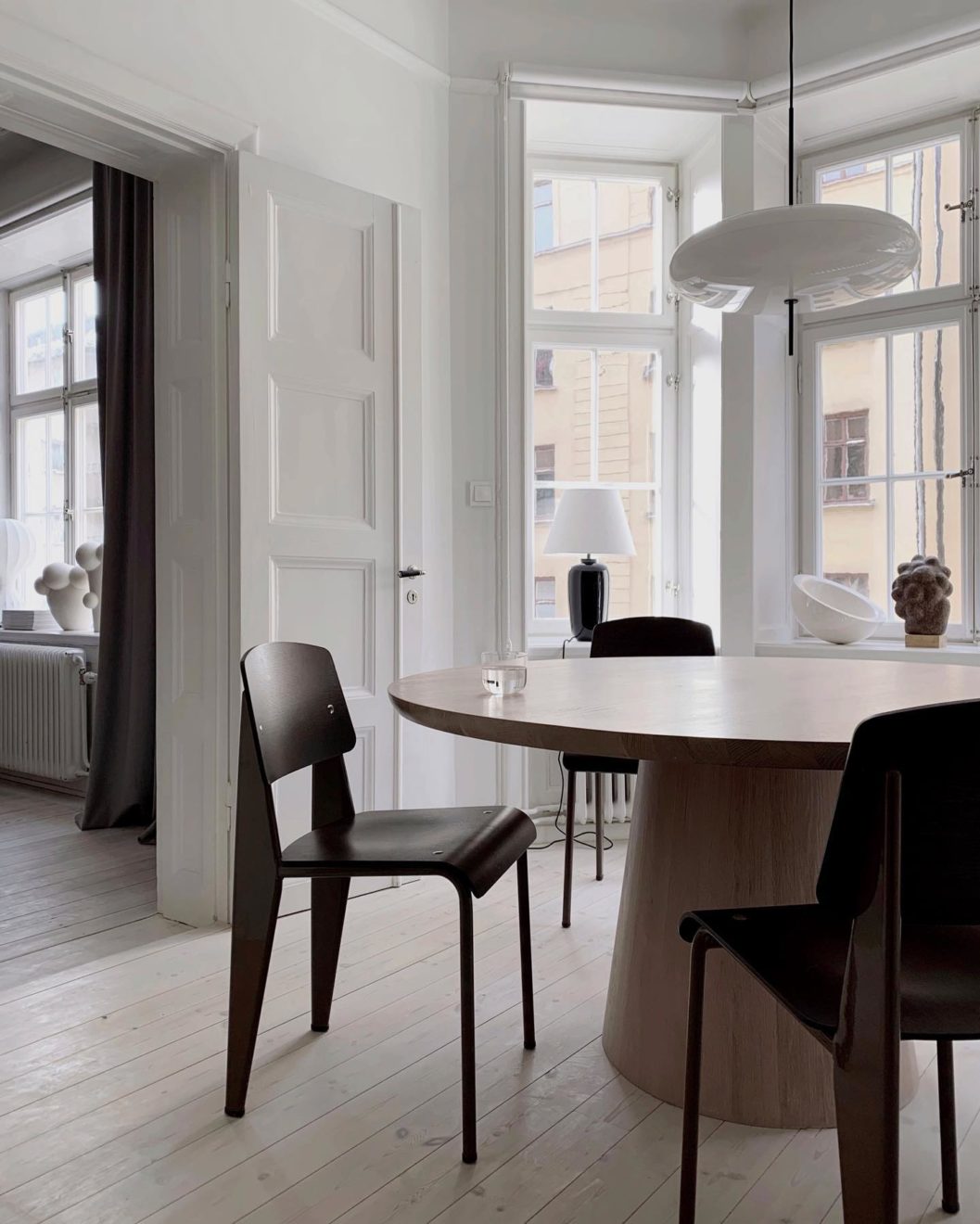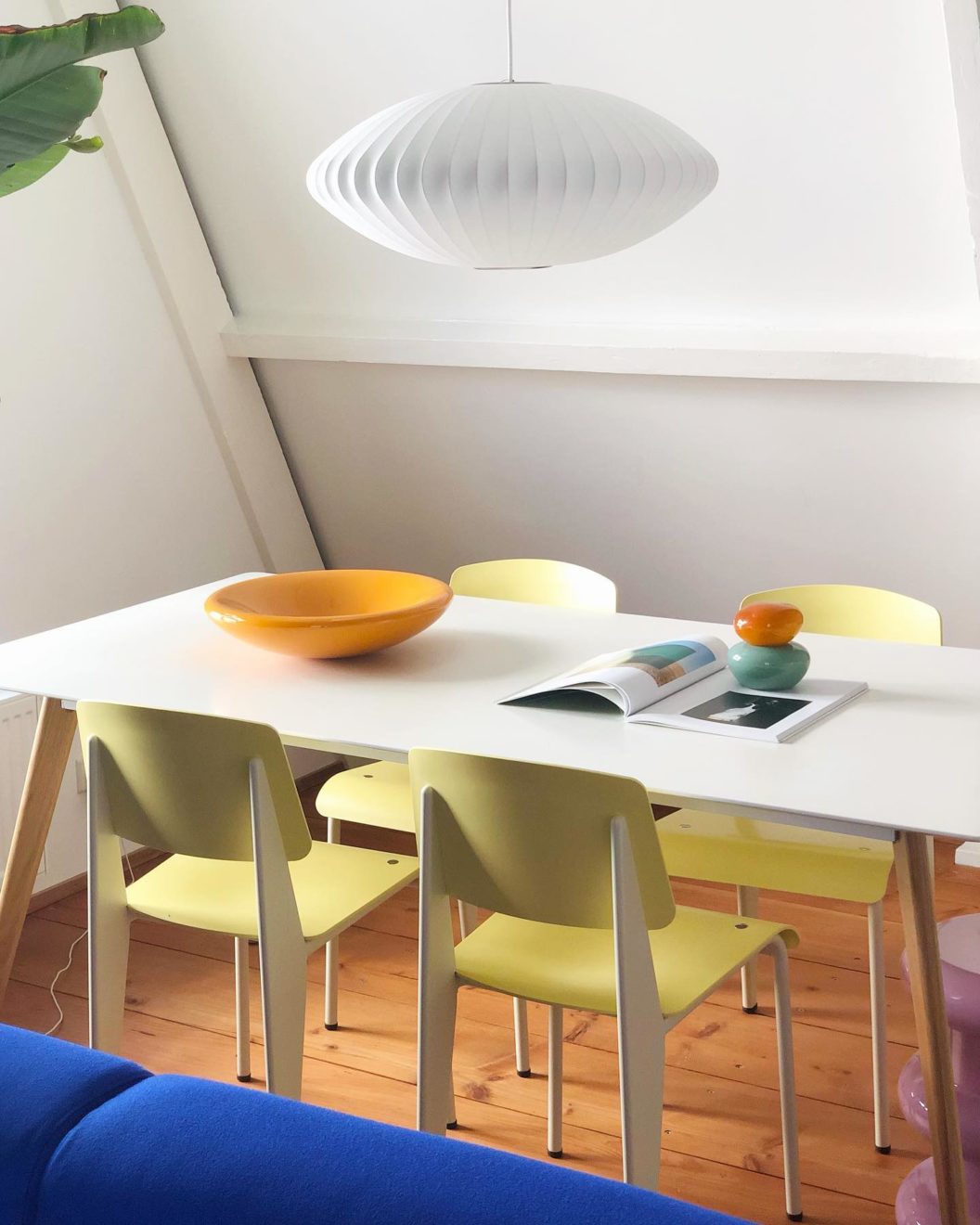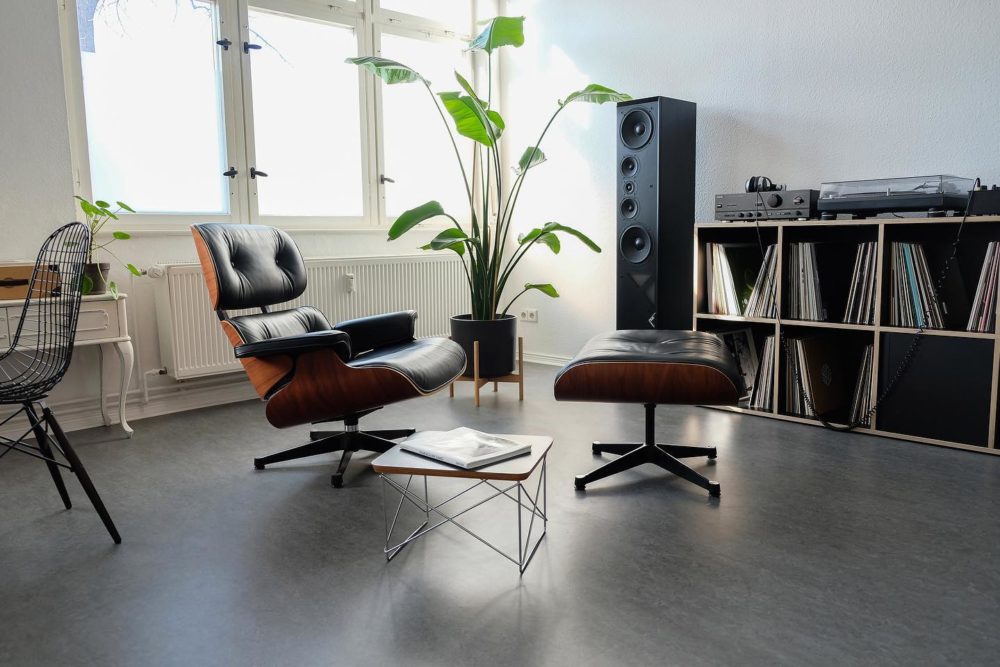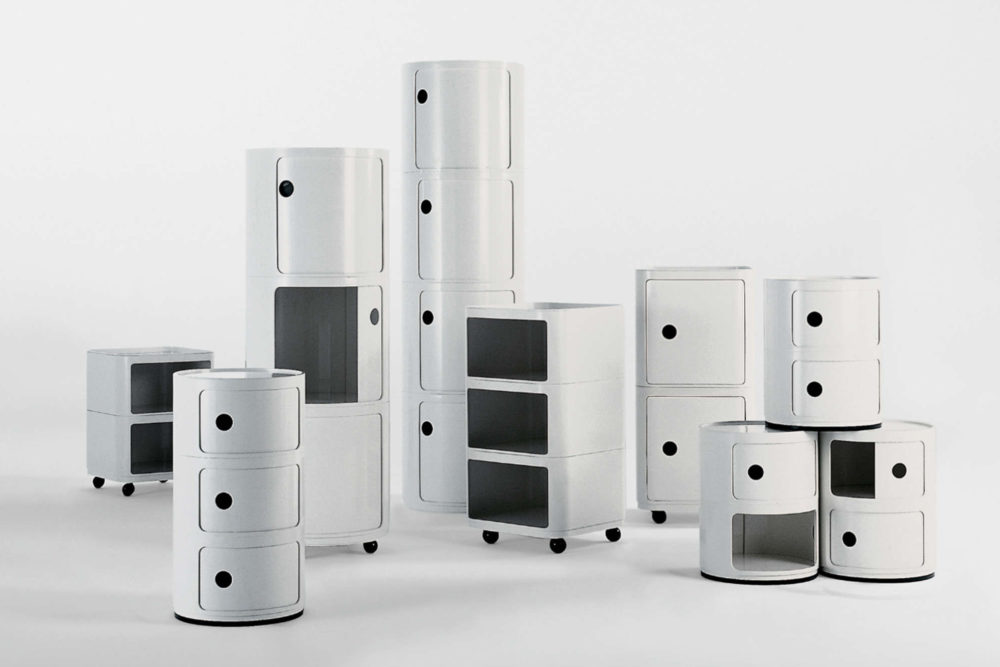Standard Chair
French designer and metalworker, Jean Prouvé, regarded himself as an engineer, first and foremost, although his design work encompassed metal work, architectural design and furniture design.
The child of an artist and pianist, Prouvé grew up surrounded by the ideals of ‘L’Ecole de Nancy’, the art collective, which aimed to make art readily accessible and to develop links between art and industry. This influence on the young Prouvé is reflected in his active role bringing manufacturing technology from industry into architecture. This blending of architecture and engineering later led Le Corbusier to designate Prouvé a ‘constructeur’. Of his upbringing, Prouvé remarked, “I was raised in a world of artists and scholars, a world which nourished my mind.”
First apprenticed to a blacksmith then to a Parisian metal workshop, Prouvé’s training as a metal artisan led him to open the first in a string of his own workshops, designing and producing wrought iron lamps, handrails and eventually furniture. He moved away from the decorative style of the time, favouring the smooth surface of folded metal, setting him apart from the contemporary Bauhaus furniture constructed with steel tubing. Prouvé always preferred sheet metal, having more faith in the durability and form of the material.
In 1934 Prouvé designed and manufactured the Standard Chair, bearing the unmistakable signature of his designs – that a design’s aesthetic should reflect the engineering and structural requirements behind it. Prouvé understood that chairs take the most strain on their back legs so designed these from folded metal, using weaker tubular metal for the front legs which bear a fraction of the stress. These voluminous hollow sections which comprise the backbone of the chair, resemble an aircraft wing, with the widest section at the juncture between the legs and seat where structural needs are highest. Always the innovator, during World War II, Jean Prouvé responded to the limited supply of metal with a version made from veneer and solid wood.
His designs are distinguished by his commitment to collaboration between artist and craftsman, an unwavering focus on engineering and a suitability for industrial production.

